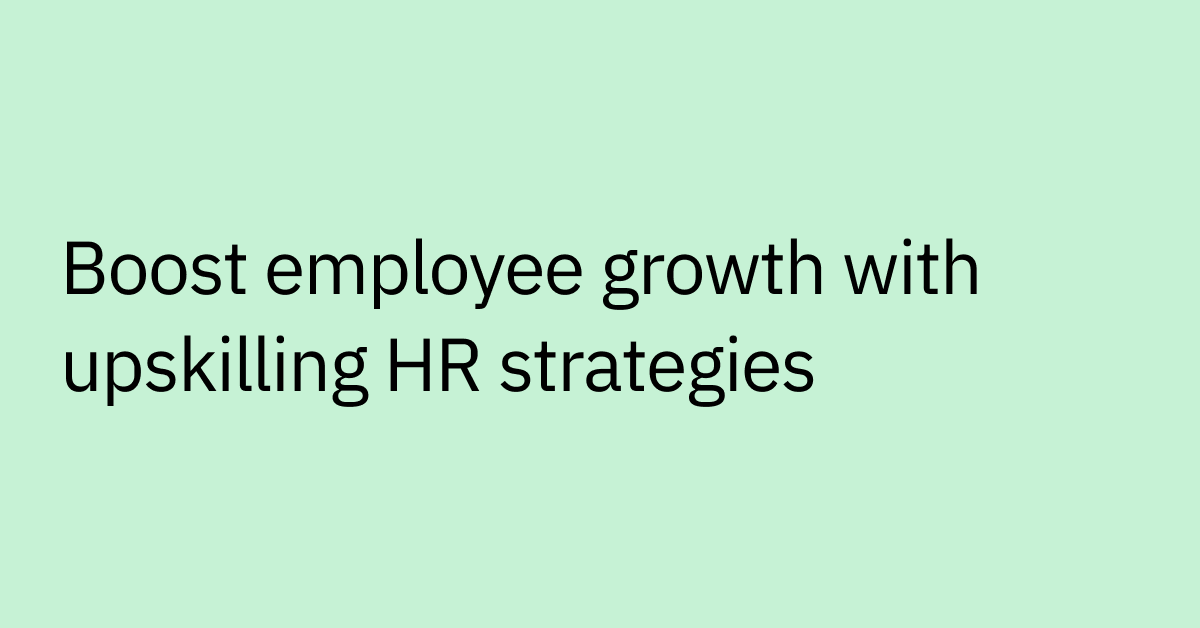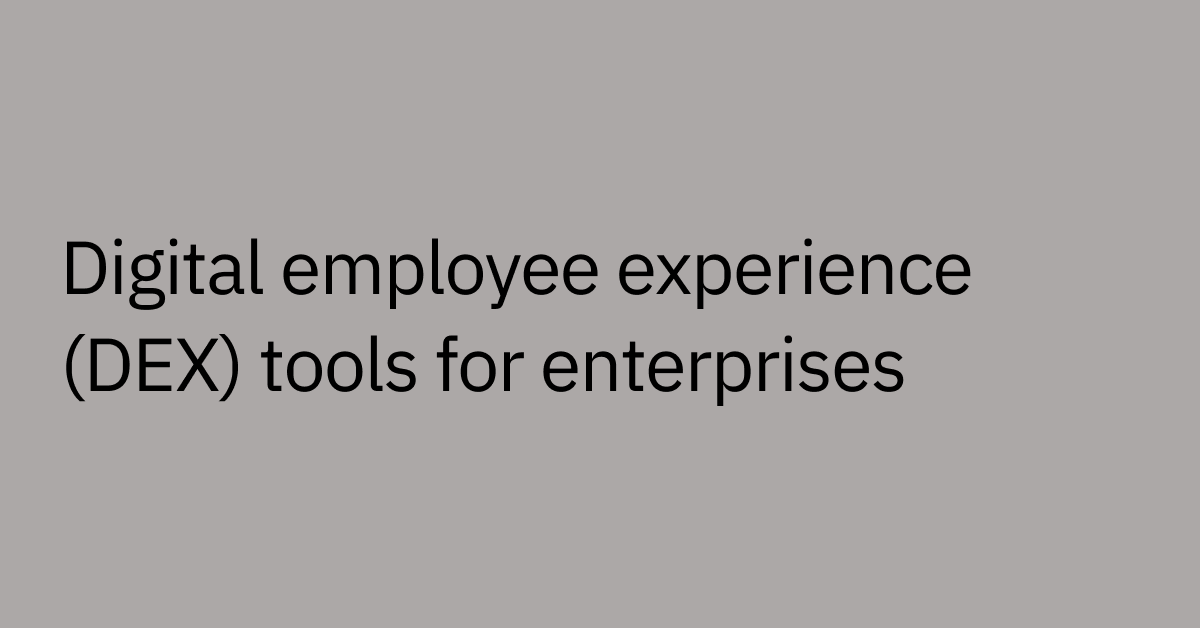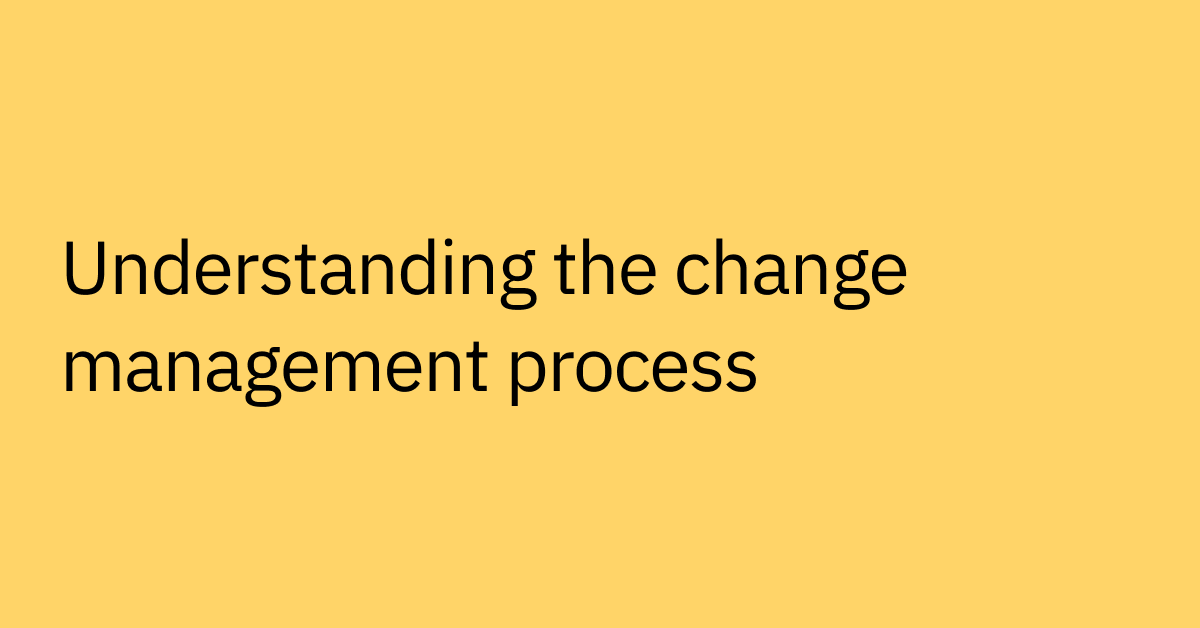Table of contents
IT Service Management (ITSM) teams never run out of things to do. From handling basic service desk tickets to maximizing system performance and security, a lot rides on your business's ability to manage its infrastructure efficiently.
Artificial intelligence for IT operations (AIOps) has made this more achievable. AIOps adoption is at an all-time high, and the market is expected to reach nearly $214 billion by 2033.
The reason behind this growing interest? Faster and more accurate incident resolution.
AIOps allows you to proactively address IT issues before they become major disruptions to your business. Instead of having IT teams navigate large volumes of data to locate the source of the problem or tediously troubleshoot issues with limited resources, AIOps offer more automation and efficiency.
What is AIOps, anyway?
AIOps combines the speed, accuracy, and automation of AI technology with the processes required to manage and maintain IT infrastructure.
Think of it as transitioning from riding a bicycle to work to a self-driving car. Both allow you to achieve the same objective, but one is much slower and requires continuous manual work, while the other is fast and takes nearly all the manual work off your plate.
Gartner coined the term "AIOps" in 2016. At this point, businesses were just starting to accept AI's role in enterprise development. Since then, AI has become a key driver in helping companies shift from reactive firefighting in IT settings to continuous optimization and improvement.
AIOps solutions give IT teams the tools and resources to manage increasingly complex IT systems. They leverage machine learning (ML) capabilities to analyze large data sets and help IT systems better understand events occurring across disparate networks or systems.
The result is a much more systematic approach to ITSM that infuses automation into the core elements of the business.
Why businesses need AIOps
Modern businesses operate using increasingly complicated architectures, fast growing tech stacks, and hundreds of different applications. Widespread cloud adoption and reliance on scalable IT infrastructures mean businesses face many potential issues. From reducing alerts to autoremediating common issues to providing real-time visibility into your tech stack, automating the process of identifying and addressing these problems is now essential.
A recent industry survey showed that 43% of organizations already use IT automation solutions. Of the businesses that aren't using them, 60% plan to implement one within the next two years. The main draw for these enterprises is the ability to reduce the manual intervention required to keep their IT environments running smoothly and efficiently.
Using advanced tools driven by machine learning technology, helps free you from reactive and time-consuming ITSM processes. Instead, AIOps opens the door for predictive analytics and intelligent remediations. This may lead to several positive business outcomes, including:
- Reduced downtime: Many major business disruptions happen due to unaddressed incremental issues. AIOps brings these potential problems to the surface, helping allow for quicker action and enabling ongoing business continuity.
- Improved efficiency: As businesses scale, so can the amount of issues to address. AIOps can provide the much-needed automation and efficiency that busy IT teams need to keep a business operating. By automating manual activities, enabling best practices, and providing continuous system tuning, AIOps helps organizations better prioritize critical tasks.
- Better customer experiences: AIOps empowers organizations to identify potential issues before they cause problems for customers proactively. This ensures faster resolution times and minimizes costly disruptions to critical provided services.
- Lower costs: AIOps may help businesses to significantly reduce operating costs because of its increased operational efficiency. By helping to prevent downtime that can disrupt revenue streams and optimizing the use of infrastructure resources, AIOps can actively contribute to a healthier bottom line.
How does AIOps work?
AIOps can automate a wide range of IT processes by combining various technologies, including machine learning and natural language processing (NLP). To accomplish this, AIOps protocols use three primary elements to function:
- Data ingestion and aggregation
- Data analysis
- Proactive incident management
AIOps systematically collects and analyzes data from network monitoring tools, device logs, and business databases. Its platforms then use machine learning algorithms to execute various functions, such as detecting potential security breaches, predicting hardware failures, or monitoring multiple application performance metrics.
Once issues are proactively identified, AIOps can trigger different automated actions. For example, after recognizing a spike in network traffic, AI-driven automation could automatically scale available computing resources, restart servers, or alert operations teams to ensure a quick response time.
8 AIOps use cases, examples, and applications
As AIOps adoption grows, it's important to understand where and how you can apply it in your organization. Below are eight everyday use cases and applications where AIOps can make a real difference when enhancing ITSM processes.
1. Performance optimization
System performance issues can occur at any time, day or night. However, rather than limiting your business's ability to respond based on core operating hours, AIOps can improve system and application functionality in real time, 24 hours a day, 7 days a week.
AIOps combines historical data with current usage trends to better predict if and when systems require optimization. By taking a more proactive approach to system maintenance, AIOps helps prevent emergencies and keeps operations stable.
Enhanced performance optimization can contribute to:
- Less downtime by setting better maintenance schedules
- Fewer disruptions to critical services
- Earlier problem identification and resolution
System outages can damage customer and partner relationships, breach SLA agreements, and result in lost revenue, irreparably damaging the brand's reputation.
AIOps help you mitigate these risks effectively, ensuring your business continues to meet customers' needs while complying with any regulatory bodies that govern your industry.
2. Threat and anomaly detection
Security threats are prevalent in modern business settings. Unfortunately, your IT teams can't be everywhere at once in order to prevent them. AIOps flip this script and turn manual security practices into more active threat-hunting approaches.
In a traditional scenario, businesses might assign a security analyst to monitor specific systems for suspicious activities. Unfortunately, the more time spent sifting through device logs or network traffic patterns, the longer it can take to address and resolve major issues.
AIOps helps minimize this costly waiting period by identifying unusual logins or potential data breaches as they occur. Through active monitoring, AIOps solutions can flag potentially dangerous activity, isolate affected systems, and notify security teams for further remediation.
3. Intelligent alerting
While you may already have various ITSM protocols in place to help support teams track and respond to issues, "alert fatigue" is a common problem in many IT settings. IT staff can quickly become desensitized to potentially critical issues when regularly bombarded with uncategorized support issues or false alarms.
Instead of relying on your IT teams to filter through every system alert, AIOps provides a much more efficient alternative. By intelligently filtering and prioritizing alerts as they occur and "before" they reach IT teams, AIOps can assist in the following areas:
- Noise reduction: AIOps helps reduce the likelihood of false positives and irrelevant alerts, ensuring IT teams only focus on the most critical issues.
- Business impact assessment: Not all IT issues are mission-critical. However, rather than leaving these decisions to busy IT teams, AIOps can take the guesswork out of determining which operational problems present the biggest risks to business continuity.
- Targeted notifications: When responding to system alerts, the more context IT teams have, the quicker they can resolve the problem. AIOps platforms can correlate alerts from different sources to better identify underlying causes of discovered issues and help IT teams resolve them faster.
4. Automated remediation
Intelligently alerting IT teams of new issues isn't the only way AIOps improves business efficiency. AIOps solutions can also streamline multiple areas of incident resolution.
AIOps can automate remediation strategies based on business policies or pre-established workflows rather than waiting for human intervention. For example, when monitoring network vulnerabilities, an AIOps solution might discover that critical software systems are missing specific security patches.
Instead of waiting for an IT team to intervene, AIOps can automatically perform real-time security updates to address the issue immediately, actively strengthening system and application security.
5. Root cause analysis
Addressing critical business issues quickly and efficiently is essential, but knowing "why" these issues occurred is even more critical.
Root cause analysis is critical to creating a more resilient business infrastructure. AIOps is a highly valuable asset that can help you gain the perspective needed to better understand all the events leading up to a significant incident.
For example, in a data breach, AIOps can help gather pertinent evidence for further analysis. Due to the computing power of AI-driven investigative tools, AIOps can leverage system logs, network traffic data, or performance metrics to quickly locate the source of a breach.
Once all critical evidence has been collected, AIOps tools can deconstruct the sequence of events that led to the breach and help businesses understand the gaps to prevent it from happening again.
6. Cloud cost optimization
Moving to the cloud can keep your business agile and open up new opportunities to scale. However, this added flexibility can come at a high price if you're not careful.
A recent survey showed that more than a third of businesses could waste as much as 21–50% of their cloud spending. AIOps can help your organization better control cloud spending by regularly monitoring usage patterns and automating various cost-saving initiatives.
AIOps can also execute specific actions, such as shutting down idle instances or right-sizing virtual machines to avoid under or overprovisioning, helping you continually improve your cloud efficiency and bottom line. By reducing the number of redundant alerts sent to cloud management teams, you're less likely to miss important usage stats that could impact monthly cloud spending.
7. Data analysis
The larger your business gets, the more data it collects and relies on. Unfortunately, this often leads to a proliferation of disparate data sources. Over time, these information silos make it difficult to source and extract actionable insights and improve business performance.
AIOps helps overcome this roadblock by enabling IT teams have the information they need when they need it to keep operations running smoothly, delivering:
- Faster access to critical information across your many systems and applications
- One unified view for carrying out comprehensive big data analysis
- Easier extraction of important cross-functional insights taken from a range of data sources
AIOps can make it much easier for IT teams to visualize critical business data. Whether analyzing system performance metrics, understanding user behavior, or evaluating security logs, AIOps helps IT teams locate key data points across numerous data sources that can help improve business efficiency and minimize risks.
8. Capacity forecasting
Growing your business often comes with unforeseen challenges that can materialize in unexpected demands on your infrastructure. Rather than relying on guesswork or being overly reactive to these changes, AIOps lets you leverage advanced analytics and predictive forecasting to better plan for capacity changes.
AIOps provides ongoing performance monitoring of your IT environment. It can assess your current and historical business data to identify significant or even subtle spikes in infrastructure demand. Then, it uses this information to provide highly accurate capacity predictions for the coming months or years so you can plan accordingly.
The future of AIOps: How AI in IT operations can enhance the employee experience
AI and IT operations blend seamlessly to deliver faster incident resolutions, increased productivity, better cost efficiency, and highly supportive employee experiences.
However, accessing the full value of AIOps means investing in the right solutions from the start. It means having AI at your fingertips so you can enhance organizational performance and employee experience through data-driven insights. Moveworks uplevels your ITOps to bring the benefits of AIOps into your organization through Moveworks AI Assistant and Employee Experience Insights (EXI). Powered by advanced language models and machine learning, you can help your tool owners and business:
- Identify the most significant challenges impacting employee productivity.
- Track the success of your IT investments by benchmarking key performance metrics.
- Help to anticipate and resolve potentially disruptive issues.
- Uncover real-time insights to optimize your ITSM workflows.
Stay ahead of the curve with an AI solution that gives your IT team an understanding of real-time performance, delivers impactful business insights, and impactful efficiency opportunities.
There's no better time to start leveraging the full capabilities of AIOps in your business. Learn how you can simplify your IT workloads with Moveworks.



